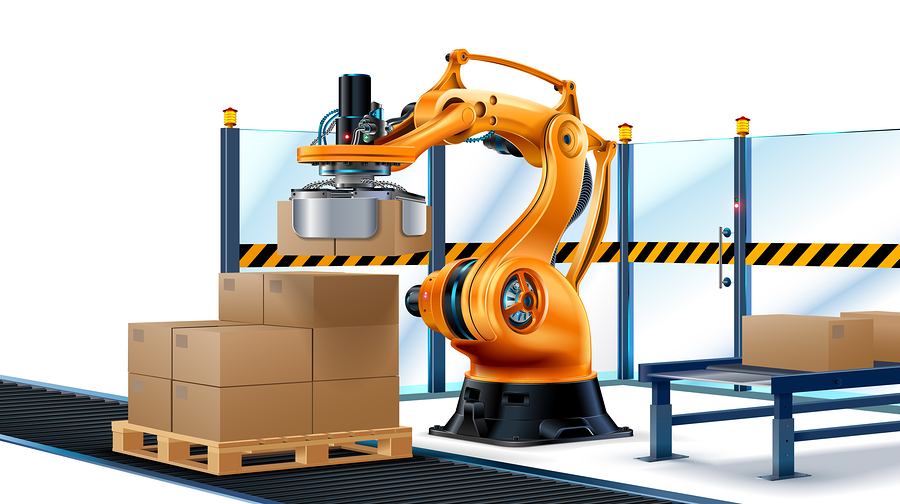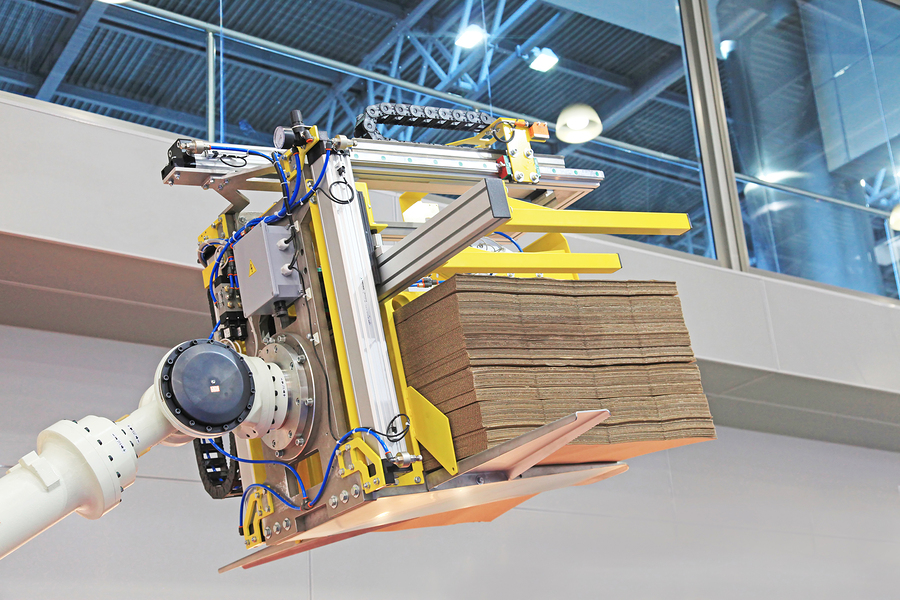Is your manufacturing facility set up to meet demand for your products, or are you consistently experiencing production delays? Could you streamline the way you move materials through your facility, avoiding injury risks along the way? Are you happy with the quality of goods you produce, or are you worried competitors are far ahead as they incorporate automated quality-assurance mechanisms in their production systems? The use of robots in manufacturing can address most of your concerns with programmed machines, rather than humans, doing the “heavy lifting” more cost-effectively. In our two-part series on manufacturing materials transportation, learn what robotics can do for manufacturers on the plant floor today, why they’re continuing to catch on so quickly, and why they’re a sound investment.
Incorporating robotics in manufacturing takes unprecedented strides
North American manufacturers across diverse industries added 27,294 robots to their production lines and facilities between January and September in 2017. These purchases cost roughly $1.47 billion within the nine-month period, indicating how important automation has become to streamlining manufacturing processes today. More than ever before, U.S. company leaders are deploying motion-control as well as visual and imaging systems, comprising both hardware and software, to supplement their human manufacturing resources and enhance production efficiencies.
It’s increasingly becoming vital for manufacturing leaders to consider implementing robotics into production because automation can positively impact their competitiveness in the marketplace. By automating several critical production tasks and processes, you can increase your manufacturing capacity and meet growing demand for your products. Besides helping increase productivity, automation also helps create better working conditions for personnel. Below is one operation to which automation can bring higher industrial efficiencies.

Pallet handling
Pallet handling automation can reduce personnel injury risks and makes easy work of lifting or processing heavy objects.
- Pallet positioning — Positioners help lift, turn, and spin heavy pellets, making loading processes more convenient and safer for personnel involved.
- Palletizing and depalletizing — Palletizing and depalletizing robots introduce speed and convenience to the processes of stacking and unpacking loads. Not only do the machines take less time to pack or unpack cases, bundles, or mixed loads but they also reduce human involvement, lower packing and unpacking costs, and minimize workers’ exposure to on-the-job injuries.
- Conveyor rollers — Conveyor rollers contribute to assembly line automation, helping enforce various standards or specifications, for example, for pallet weights. The system can autonomously detect batch errors, saving time and human labor costs.
With such rapid robot implementation, automation applications extend far beyond just moving pallets. Check out tomorrow’s blog for part two of our two-part series on in-house robotic manufacturing transportation to learn about automation applications for moving raw materials and finished products — and the additional benefits automation can bring.
